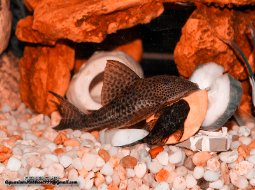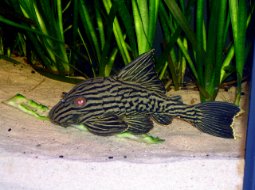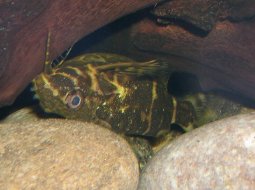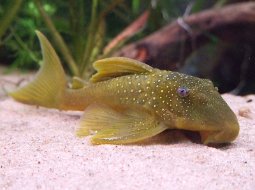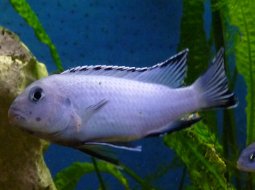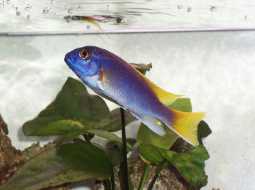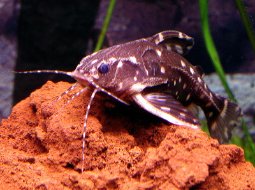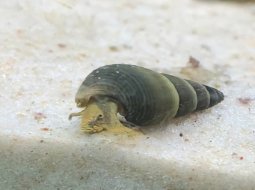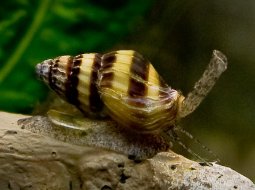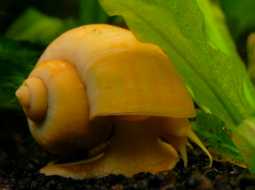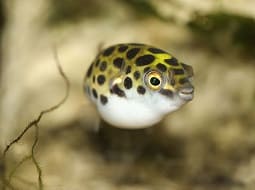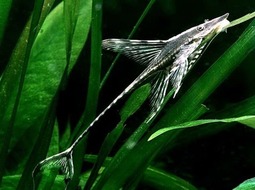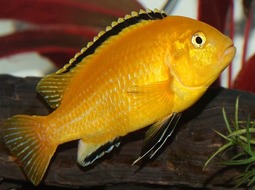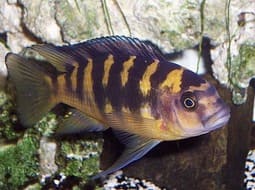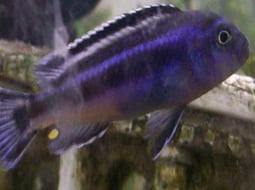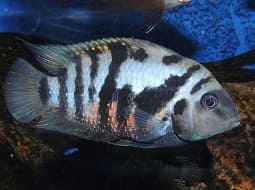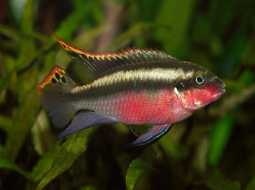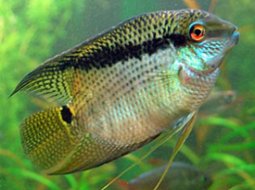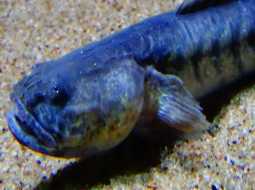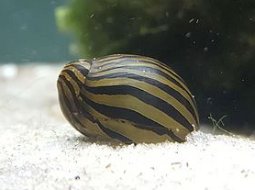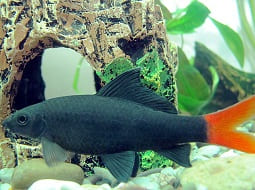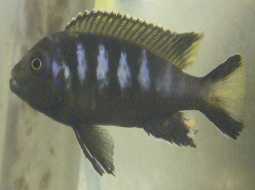
Loading Aqualapp ...
Care and Compatibility of Melanochromis auratus - Melanochromis auratus
Introduction
The Melanochromis auratus, also known as the Auratus Cichlid or Golden Mbuna, is a freshwater fish native to Lake Malawi in Africa. It is known for its beautiful coloration and aggressive behavior. Males have a bright yellow body with black stripes, while females are more dull in color. It is a territorial species that defends its territory from other fish. It is recommended to keep them in properly spaced aquariums with hiding spots to reduce aggression.
Behavior
Melanochromis auratus is a fish known for its territorial and aggressive behavior. Males are particularly aggressive towards each other and may display exhibition behaviors such as expanding their fins and swimming in an intimidating manner to establish dominance. They are also prone to aggression towards other similarly colored fish or smaller fish. Providing ample space and hiding spots in the aquarium is recommended to reduce conflicts and stress.
Sexual Dimorphism
Sexual dimorphism in Melanochromis auratus is evident. Males have more intense colors and often exhibit a distinctive stripe pattern, while females tend to be duller in color. During the breeding season, males may exhibit more pronounced territorial behavior.
Reproduction
Melanochromis auratus reproduces through egg-laying. Males are territorial and construct nests in the substrate to attract females. After fertilization, females incubate the eggs in their mouths for about 3 weeks. During this time, they do not feed and actively protect the eggs and fry. Once the fry hatch, they are kept in the mother's mouth for protection from predators until they are large enough to fend for themselves.
Aquarium Conditions
Melanochromis auratus is an African mbuna cichlid that requires a spacious aquarium with rocks, hiding spots, and open swimming areas. It prefers alkaline water and warm temperature. Aquarium décor should include stacked rocks and sand to recreate its natural habitat in Lake Malawi. Maintaining water quality is important and providing a varied diet.
Feeding
When it comes to feeding, Melanochromis auratus is an omnivorous fish that primarily feeds on algae and small invertebrates. In captivity, it can be offered a balanced diet that includes commercial foods in the form of flakes, pellets, or granules, as well as fresh or frozen foods such as brine shrimp, daphnia, and crushed vegetables.
Complexity
Caring for Melanochromis auratus can be moderately challenging. They are territorial fish and can be aggressive towards other fish, especially during breeding and territory defense. It's recommended to keep them in groups with other mbuna species and provide enough hiding spots to reduce aggression. They require a balanced diet and regular aquarium maintenance.
In case you need more help, or if you want to know into any topic related to the Melanochromis auratus (Melanochromis auratus) and even any other species you can use the forums to ask what you need.
To do an analysis more detailed about coexistence and behavior of Melanochromis auratus (Melanochromis auratus) use the Aquarium simulation tool, if you do this you can test different ways to combine the Melanochromis auratus with other fishes giving the dimensions and space on you aquarium, on this way you can known the optimal configuration for keep the fishes that you want.
You can also find out the 31 species compatible with the Melanochromis auratus (Melanochromis auratus) can live together.
Note: The parameters of the water such as PH and temperature are also used to calculate the compatibility of the species.
Compatible species (31)
Compatible (6 Species)
Compatible without any restriction
Similar Sizes (1 Species)
They can coexist if they are the same size or very similar sizes, it does not work in all cases, there may be exceptions.
With Reservation (18 Species)
Estos peces son ciclidos africanos del lago Malawi agresivos, por lo general pueden convivir con otros Mbunas agresivos si cuentan con espacio suficiente en el acuario, rocas y escondites donde puedan refugiarse de ser necesario.
Las especies territoriales por lo general pueden convivir con especies protegidas con coraza, ya que no pueden hacerles daño por su dura piel, lo que si hay que tener en cuenta es tener un acuario con dimensiones favorables para que cada pez pueda delimitar un territorio, ya que la mayoría de peces acorazados son también peces de fondo y les gusta estar buscando lugares donde ocultarse.
Compatible in some cases, it depends on the nature and personality of the fish.
Puede haber agresividad contra ejemplares de su mismo genero
Showdown over territory (3 Species)
Fish can live together as long as the space is spacious enough to delimit a territory, otherwise there may be aggressions for competing for the territory.
Como a estos peces les gusta estar refugiados en diferentes ubicaciones del acuario ya sean en plantas, troncos, rocas etc, si otro pez intenta entrar donde está escondido podrían haber confrontaciones por ese refugio.
Considerable size difference (1 Species)
They can coexist while they are similar in size or the size difference is not very abysmal, since as the fish grows it increases the chances of eating its partner that did not grow much.
Compatible if space is enough (2 Species)
They can coexist together if the aquarium they share is large and spacious enough for both species to feel good, as some fish may attack others to feel that they have little space and try to eliminate the competition.
Melanochromis auratus
Melanochromis auratus
.jpg)
- Ph: 7.5 - 8.8
- Temperature (c°): 24 - 27
- Measures: 8 cm - 13cm
- Aquarium Capacity:
52 Liters - 14 Gallons - Alimentación: Herbivores, Omnivores
- Colores: Blue, Yellow
- Comportamiento: Likes to take refuge, Semi Aggressive, Territorial
- Habitad: African
- Preferencias del Acuario: Natural plants
- Tamaño: Medium
- Taxonomía: Cichlids, Fish, Mbunas
- Tipo de Agua: Sweet water, Tropical waters
- Velocidad de nado o movimiento: Normal
- Zona de Nado: Swim in the middle of the aquarium

.jpg)
